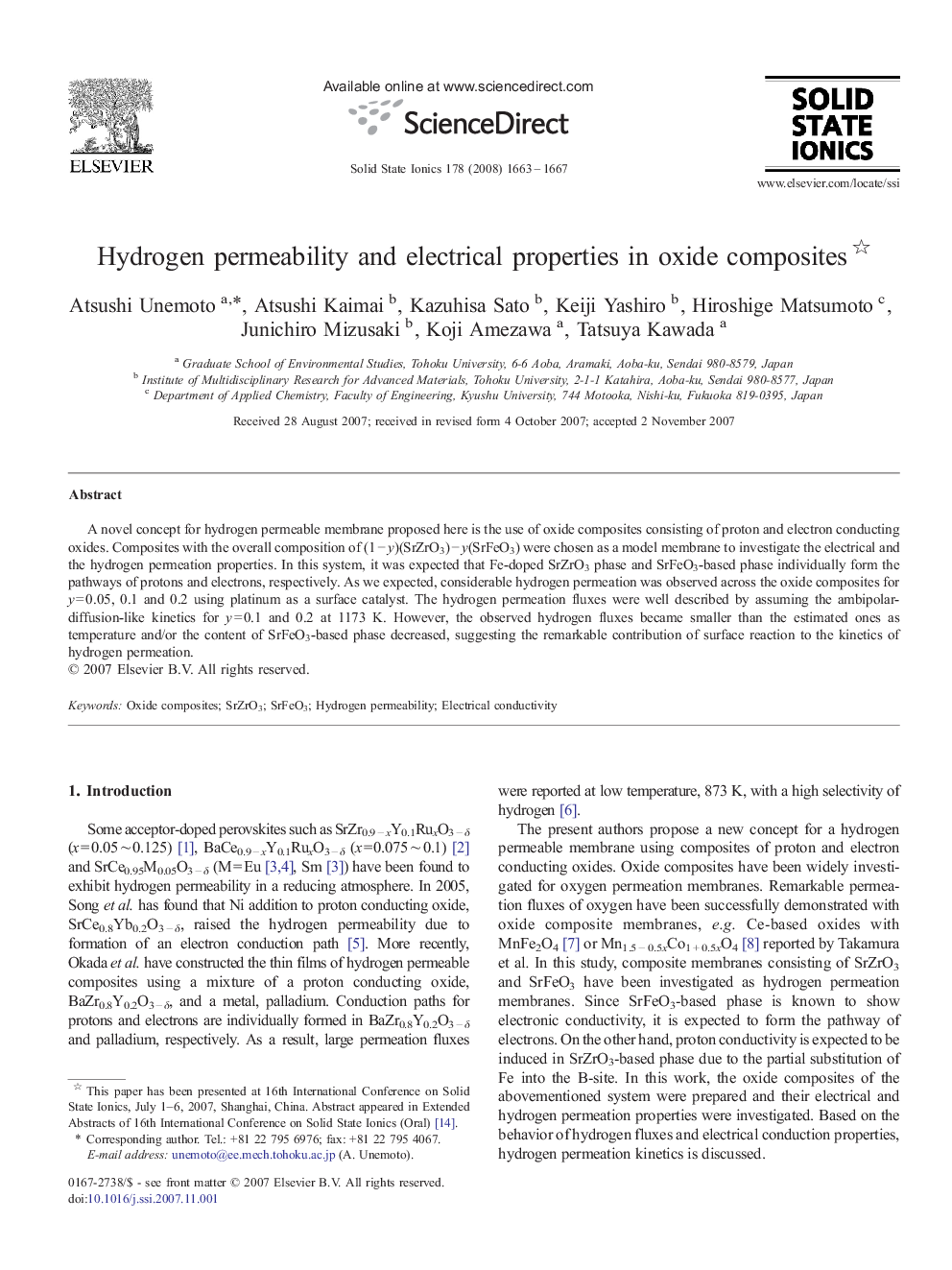| Article ID | Journal | Published Year | Pages | File Type |
|---|---|---|---|---|
| 1297346 | Solid State Ionics | 2008 | 5 Pages |
A novel concept for hydrogen permeable membrane proposed here is the use of oxide composites consisting of proton and electron conducting oxides. Composites with the overall composition of (1 − y)(SrZrO3) − y(SrFeO3) were chosen as a model membrane to investigate the electrical and the hydrogen permeation properties. In this system, it was expected that Fe-doped SrZrO3 phase and SrFeO3-based phase individually form the pathways of protons and electrons, respectively. As we expected, considerable hydrogen permeation was observed across the oxide composites for y = 0.05, 0.1 and 0.2 using platinum as a surface catalyst. The hydrogen permeation fluxes were well described by assuming the ambipolar-diffusion-like kinetics for y = 0.1 and 0.2 at 1173 K. However, the observed hydrogen fluxes became smaller than the estimated ones as temperature and/or the content of SrFeO3-based phase decreased, suggesting the remarkable contribution of surface reaction to the kinetics of hydrogen permeation.
